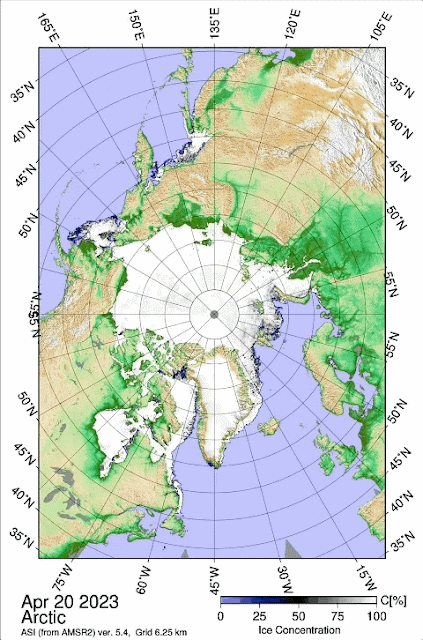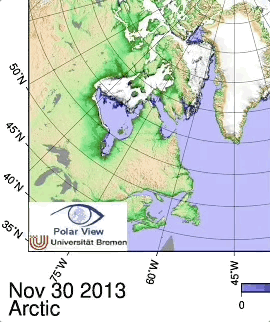~EH2r April sea ice projection morphology was bang on
~Extent numericals slightly off, again by underestimating cloud effects.
~Hudson Bay early December sea ice in dire straits.
April 2023 sea ice minima extent projection:
Estimating sea ice morphology forecast breakthrough. How does one see it coming to be when there was so much ice cover in April? By finding out where the CTNP was located all winter. Cold Temperature North Pole winter 2022 2023 was peculiar. But severely studying its gyrations gave this remarkable success. However extent numbers were off by not so much, sea ice extent forecasting is much more easier to do than a few years prior though. The problem was the obsession with 2012 and 2007 minima's, which likely had more sunshine than all the other years, caused by combination of ENSO strengths and CTNP locations. Which is still the case, ENSO variant is particularly important. The more clouds covers Arctic summer the less sea ice melts. In particular 2007 had a great low albedo period, 2012 was a bit more complex, with a particularly warm Arctic spring, a CTNP geographical effect. Since then sea ice thickness shrank, gradually, with apparent moderation from greater cloud cover, mainly from the great North Pacific warm sea surface blob.
Indeed, Arctic sea ice can vanish almost completely given an extensive period of low cloud cover, The only way this can be done, would be by massive summer La- Nina, recent ones has had a hard time exceeding the moisture coming from the warm Pacific blob. It is a reprieve of sorts from yearly rapid sea ice extinction, however the gradual melt down continues unabated, heat from the surrounding massive oceans will eventually warm the Arctic Atmosphere causing less clouds. And cause what is already happening in some key areas, Hudson Bay being one of them:



No comments:
Post a Comment